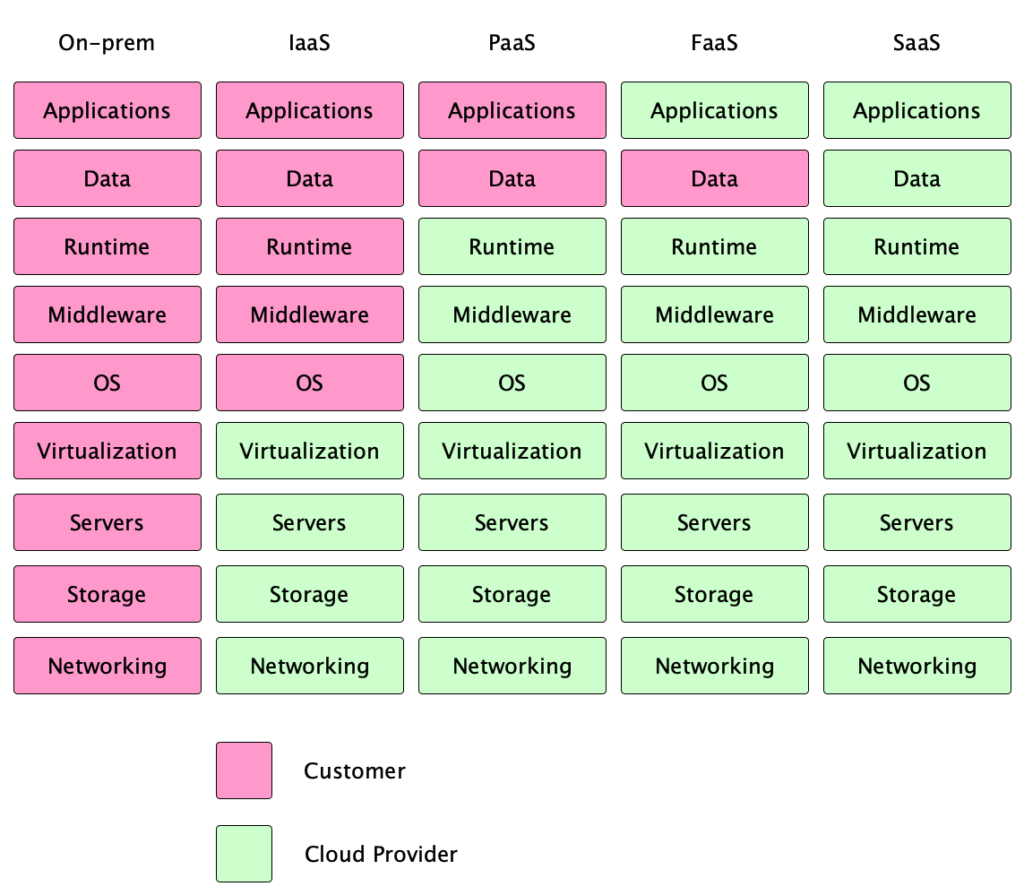Table of Contents
Motivation
Getting the AWS Cloud Practitioner Certificate is one of my goals from my New Year’s Resolutions and Technology Learning Roadmap 2023
So time to buckle up and learn about cloud concepts first!
The Cloud
tl;dr; the cloud is someone else’s computer 🙂
In general cloud computing means that you don’t pay for computer hardware like servers, NAS, SAN devices anymore.
Instead, you use them as a service.
Service Models
There are a couple of different service models.
 IaaS
IaaS
Renting other people’s servers and storage units is called Infrastructure as a service or IaaS.
Instead of installing components into a well-protected, air-conditioned server room on your company’s premise you pay the cloud provider for doing so.
Advantages: You trade capital expense with operational expenses.
Disadvantages: operating costs of data centers are also comprised of maintaining the software components.
So another service model is called Platform as a service or PaaS
PaaS
In this use case you pay for hardware usage and updates of the system as well. This is called Platform as a Service (PaaS)
The PaaS provider will take care of updating the OS and other dedicated packages (think: sudo apt-get)
You will only have to keep your applications up to date.
SaaS
Last but not least: SaaS or Software as Service
In many cases you want to use a specific software and don’t want to be concerned with keeping the application itself upto-date
(thinks databases) So there is a service model where you just use a specific software and don’t have to worry about updates / maintenance at all.
FaaS
Ah, hold on, one more thing. There is a so called “serverless” concept.
Serverless vendors offer compute runtimes, also known as Function as a Service (FaaS)
The cloud provider allocates machine resources on demand, taking care of the servers on behalf of their customers.
An example is AWS Lambda






